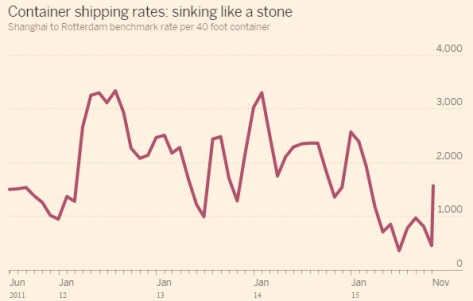
Migrating to foreign countries can sometimes be a troublesome method for the expat or immigrant with limited funds. Particularly if your employer isn’t paying for your moving expenditures, or perhaps you don’t have a job in place for you yet, you ought to be extremely watchful on how you are spending your income when you’re heading abroad.
Below are our my recommendations on relocating abroad if you’re an expat with limited funds:
• Utilise the Airline Baggage Allowance to your benefit: For anyone who is flying a significant distance, the majority of the serious airline carriers will offer you 2 free checked suitcases, one carry on bag, and one personal suitcase. Employ this in your favor. In addition, to make certain you’re not above the 50 kg weight limit for the two checked bags, make certain you broaden your packing. As an example, place your footwear inside your carry on bag and any jackets that will fit also. This allows you to fit even more of your clothing inside your bags and avoid any extra moving fees by sending them.
• Use a focused currency service to move your cash to your destination country and avoid significant bank fees. By using the the best services, your cost savings allows you to acquire home furniture and other things you need inside your destination country.
• Go Fully Furnished with Your Accommodations: If you do not wish to send out your home furniture and don’t desire to purchase household furniture overseas, pay the extra rent for an efficiency which is already furnished. By doing this, it is possible to save a large amount of money on your investment in heading internationally.
• If You Desire to Ship, Think By Boat: Most people don’t realize that there is a reasonable snail mail option for shipping items abroad. If you inquire at the neighborhood post office, you will learn that there’s a method to deliver your possessions by ship and it will take around three months according to the distance. As an example, I shipped 5 boxes from Seoul to San Diego and it took 3 months and cost me $20 for each box. If you have time and prepare, this is a great way of avoiding sizeable surcharges when shipping items internationally for example winter coats.
• Consider a Container: If you do have a whole lot to move and know that you are going to be abroad for a significant amount of time, look at selecting a container. This is a way to get all of your items in one place being shipped at once. It isn’t really always the most cost-effective option, however it depends simply how much you need those things that you’re shipping to justify the price. If you are relocating your whole family, this may be a viable choice for you to contemplate also.
• Have Relatives Assist You: An additional way to use the airline luggage requirement to your benefit is to make your family member bring a suitcase for you with things you won’t require until later on in your stay overseas. This is another way to help save a lot of cash on the free baggage allowance that are supplied by most key airways.
• Contemplate Leaving Your Pieces of furniture in Your Home Region: If you are taking a one-year task, why pay for your furnishings to come if your employer isn’t giving you an allowance? It is a discussion that you need to honestly have yourself because your Ikea table, as an example, is probably not worth shipping internationally. With all the great stores that have cost effective home furnishings all over the world, you will be able to furnish your one-year residence with ease.
Nowadays, there are many budget friendly solutions to relocate overseas. Given the plethora of inexpensive shipping choices, extensive global flight choices, and means to locate furnished accommodations, the expat with limited funds can definitely move to another country without having to spend an excessive amount of money.
The key is to be creative and not be scared to carry out extensive investigation to be able to utilize your money in the most efficient way possible when relocating abroad.



![80_745_420_photog_ship_michael_s_nolan_crp_mini[1]](https://internationalremovals.wordpress.com/wp-content/uploads/2015/05/80_745_420_photog_ship_michael_s_nolan_crp_mini1.jpg?w=300&h=169)
